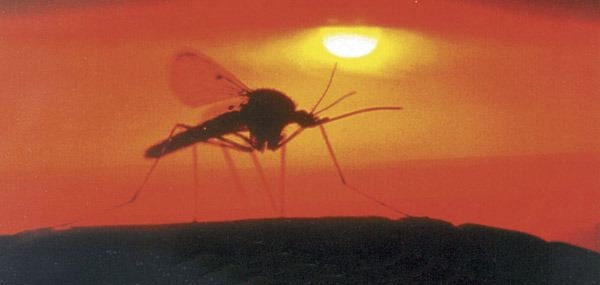The mass of mosquitoes feeding on us to date in the Fraser Valley are not the kind that carry the West Nile virus.
But the two kinds that may carry the virus have been found in recent sampling, and the B.C. Centre For Disease Control is advising Fraser Valley residents to start taking precautions against mosquito bites.
“None of the mosquitoes have tested positive for the virus,” Dr. Bonnie Henry told The Progress in a telephone interview Thursday.
“But because we are starting to see an increase in the type that may carry the virus ... we’re warning people to think about mosquito bites and to take precautions.”
Those precautions include using insect repellent, especially in the mornings and evenings when mosquitoes are most active, draining all sources of standing water around homes, and wearing light-colored, long-sleeved clothing when out of doors.
As the mosquito population increases, so does the population of the two species that may carry the virus, the Culex tarsalis, which lives in water-filled ditches and along rivers, and the Culex pipiens, which lives in catch basins and under houses.
“The ones we have been seeing in large numbers in the Fraser Valley are the Culex tarsalis,” Dr. Henry said in an email to The Progress.
“We have also seen some Culex pipiens in the traps set by Fraser Health, but the numbers of Culex tarsalis in the traps are what prompted the warning today to take precautions to prevent bites,” she said.
The FVRD has an on-going program to eradicate mosquitoes found in area flood waters, and in municipal catch basins through-out the region. So far, the region expects to spend an estimated $260,000 on mosquito control, about $100,000 more than budgeted, due to the prolonged high water level of the Fraser River, which has increased mosquito breeding grounds.
No human cases of WN virus infection have been reported to date in the Fraser Valley.
But in September, 2009 a horse in the Langley area was infected, suggesting the virus had made its way here from the south Okanagan where it made its first appearance in B.C. three weeks earlier.
It’s believed the virus had migrated from Washington State, traveling up the Columbia River to the Okanagan, where two confirmed cases in humans were reported in August, 2009.
Health officials said most people infected by the virus will not show any symptoms. About 20 per cent will show flu-like symptoms such as fever, headache, body aches, nausea, rash, swollen glands and sensitivity to light.
Only about one-in-150 will experience serious illness due to nervous system complications that can, on rare occasions, be fatal.
The Fraser Health Authority collects dead crows for testing because they often die first as a result of WN virus infection. Early detection allows health officials to implement plans to minimize human health risk.
“Residents play a big role in West Nile surveillance,” said Glenn Embree, the FHA’s manager of health protection programs.
“Without public participation, early detection of WN virus is difficult,” he said. “We urge Fraser residents to report dead crows to the Fraser Health’s West Nile Virus Toll-Free reporting line, 1-888-968-5463.”
Concerned citizens may also call that number for information about mosquito breeding habitat on private lands in the Fraser Health region.
For more information about the West Nile virus, visit the BC Centre for Disease Control website at www.bccdc.ca.
rfreeman@theprogress.com
twitter.com/paperboy2
